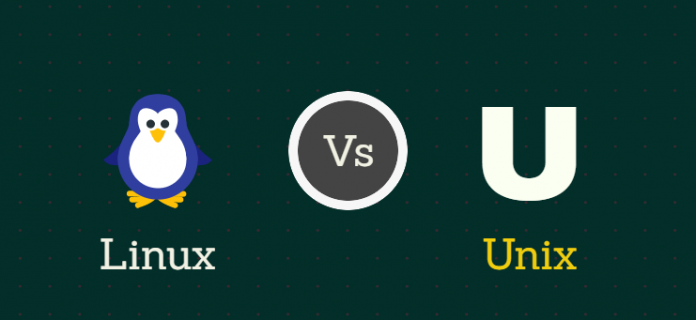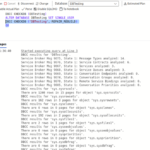Linux and Unix are two terminologies that are interchangeably used to refer to the same Operating system. This is largely due to their striking similarities and few are not able to draw a distinction between the two. In the Linux vs Unix conundrum, there exists confusion on which system does what. If you are were born around the mid-’90s, chances are that you have only interacted with the Linux Operating system. Linux commands a huge market share in datacenter and cloud computing platforms. So ubiquitous is Linux that it underpins most smart devices such as smartphones, Android TVs and IoT devices.
While it’s true that Linux and Unix share a lot in common especially in terms of the file system hierarchy and terminal commands, we cannot ignore the differences that exist between these two systems. In this article, we will seek to understand both Unix and Linux in greater detail and flesh out the variations between the two.
To start off, Linux is a clone of Unix. It’s a Unix variant that has grown in leaps and bounds spawning hundreds of flavours or distributions. These are maintained by a vibrant community of developers. To better understand how we arrived where we are, let’s journey into the history of Unix. We will later look at the sequence of events that spawned the creation of Linux.
History of Unix
Unix dates back in the late 1960s in AT&T Bell labs where a team of ambitious developers led by Dennis Ritchie and Ken Thompson was seeking to develop a multi-user and multi-tasking system for a minicomputer known as PDP-7. At the time, Unix was a derivative of the Multics operating system (Multiplexed Information and Computing Service). This was a system that powered the Mainframe computers.
However, in the 1970s, the two lead developers became uncomfortable with the direction UNIX was taking. Frustrated with the scope and the direction of Multics, they decided to chart a different course and spin up a new operating system off Multics. Concerted efforts between Dennis Ritchie, who’s regarded as the father of C programming language, and Ken Thompson, the inventor of Go language, spawned a better system known as UNICS which later changed to UNIX. UNIX proved to be portable and could be installed and supported by many hardware architectures.
Unix grew rapidly in the ‘70s and ‘80s and become popular in academia. Among the institutions that adopted and changed the trajectory of Unix was the University of California in Berkley where engineers modified and developed UNIX further that gave rise to a new system known as BSD short for Berkeley Software Development. BSD shipped with several enhancements and new software applications which heralded a new era in operating systems. Meanwhile, AT&T charted its own course and came up with its version of UNIX known as System V. BSD later came into the picture and was quick to edge out System V and from BSD, variants like NetBSD, OpenBSD and FreeBSD were spawned.
The inception of Linux
In 1990, Linus Torvalds, who’s popularly known as the father of Linux, further worked on UNIX and eventually came up with a viable Linux kernel that he dubbed Linux. The kernel opened doors to the realization of an operating system with utilities and other application programs, away from the proprietary UNIX system. Going forward, Linux was made opensource and free to use under the GNU/GPL license model. This made way for other distributions such as Slackware with a Linux kernel, GNU tools such as GCC compiler, X windows system ( The Graphical User Interface ), and other additional BSD components.
Nowadays, there are hundreds upon hundreds of Linux distributions that are listed in distrowatch according to popularity and usage. Among the most popular and widely used distributions are Ubuntu, Linux Mint, Fedora, CentOS, ArchLinux, and Manjaro.
Thus far, we have looked at a brief history of UNIX and how, through concerted efforts of many developers, it gave rise to Linux which is a free and opensource system. The question begs, What’s the difference between UNIX and Linux? What is in UNIX that’s not in Linux?
Let’s now shift gears and cast the spotlight on the differences between the two:
Linux vs UNIX
Let now check out the differences between the two operating systems.
For a start, Unix is an operating system that was initially developed in AT&T Bell lab. It’s from UNIX that Linux and its derivates are derived. Linux code was developed by Linux Torvalds in 1991 totally from scratch.
Linux is free to download and use. While some enterprise distributions such as RHEL require a paid subscription, most distros remain largely free and opensource. This is one attribute that has made it so popular and seen its widespread use among developers and software engineers. It majorly explains why we have a myriad of Linux distributions, each unique in its own way. UNIX, on the other hand, is largely proprietary and usually comes preinstalled in most hardware, a good example being macOS.
Additionally, while Linux is opensource, UNIX is not. You need a license from its manufacturers and even then, you don’t get to view, and modify the code or even redistribute it. With Linux, this is quite different. Linux is free and opensource and gives it’s users the freedom to modify the code and redistribute it without any limitations.
Due to its cost-effectiveness, Linux is more preferred to UNIX in data centres, cloud hosting platforms, and even for desktop use at homes or in the office. UNIX is proprietary and has been a reserve for special application servers and internet servers. Over time, the usage of UNIX had waned leaving Linux to take up the front seat in Cloud hosting platforms.
In terms of portability, Linux is very portable and can be installed in almost any hardware platform. You can install it on intel, AMD processor-based hardware, and even ARM devices such as Raspberry Pi. In sharp contrast, UNIX is available for installation on only a few platforms.
What about support?
Linux constitutes a wide community of vibrant opensource enthusiasts. Furthermore, you get tons of forums to provide support and guidance to Linux users. In UNIX, however, support is commercial, unlike Linux.
Conclusion
In this article, we shed light on the history of UNIX and how various efforts by developers led to the development of Linux as a free and opensource system. Lastly, we touched base on the differences between UNIX and Linux and fleshed out the nuances therein.
Linux reigns King in the Opensource circles with numerous distributions available for download and use at absolutely no cost. While still used in special platforms, the use and demand for UNIX are on a decline. This is mostly due to vendor lock-in and proprietary licenses.





